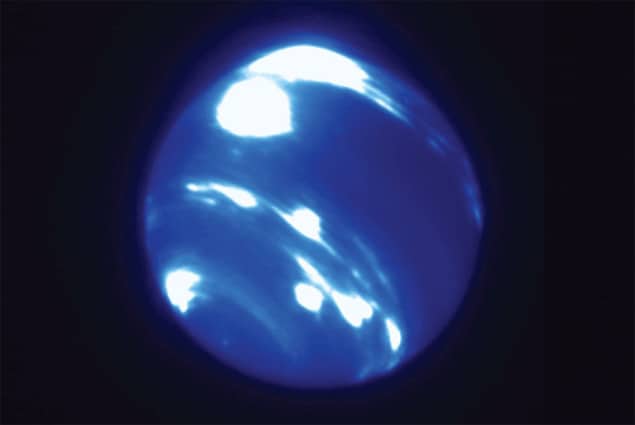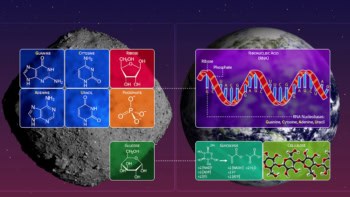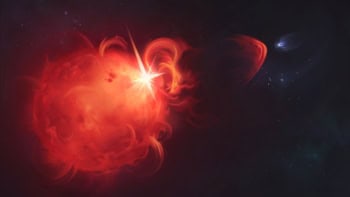
A storm complex nearly the size of Earth has been seen in a usually quiet area of Neptune. Ned Molter from the University of California, Berkeley in the US spotted the storm while performing a test run of twilight observing at the W M Keck Observatory in Hawaii.
The storm system appears as a very bright region about 9000 km in length and spans at least 30° in both latitude and longitude. “Seeing a storm this bright at such a low latitude is extremely surprising,” explains Molter. “Normally, this area is really quiet and we only see bright clouds in the mid-latitude bands, so to have such an enormous cloud sitting right at the equator is spectacular.”
An anchored vortex
As on all planets, Neptune’s atmospheric winds vary greatly with latitude. For the storm system to span so many degrees, there therefore has to be something holding it together. A possible explanation is a huge, high-pressure vortex system anchored deep in the planet’s atmosphere. Just like water-vapour-forming clouds on Earth, methane gas on Neptune would cool and condense into clouds as it rises up the vortex.
Alternatively, the bright system could be a huge convective cloud, as seen on other planets such as Saturn. With this scenario, however, Neptune’s storm would likely have smeared out over the course of a week, but Molter observed it getting brighter between 26 June and 2 July.
Drastic dynamics
“This shows that there are extremely drastic changes in the dynamics of Neptune’s atmosphere, and perhaps this is a seasonal weather event that may happen every few decades or so,” says Imke de Pater, also from the University of California, Berkeley.
Understanding Neptune’s atmosphere is becoming increasingly important with regards to exoplanets, as the majority resemble the ice giant. Molter and de Pater hope to investigate the storm system further with more twilight observation runs at the Keck Observatory.



